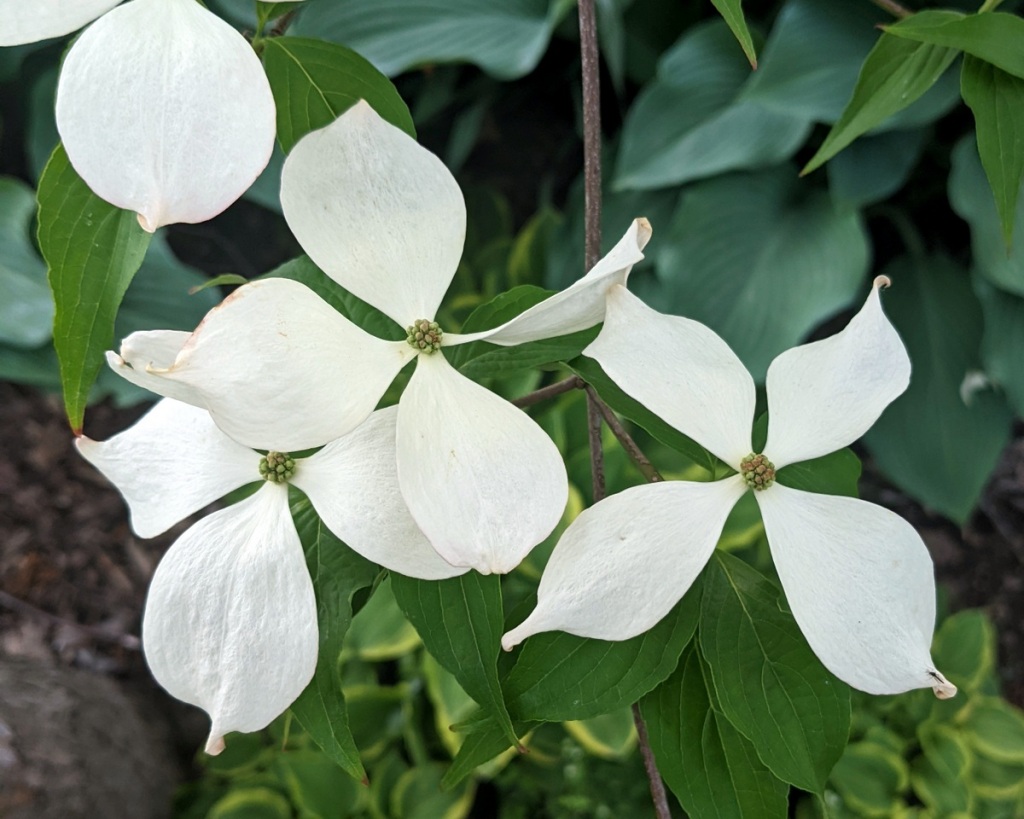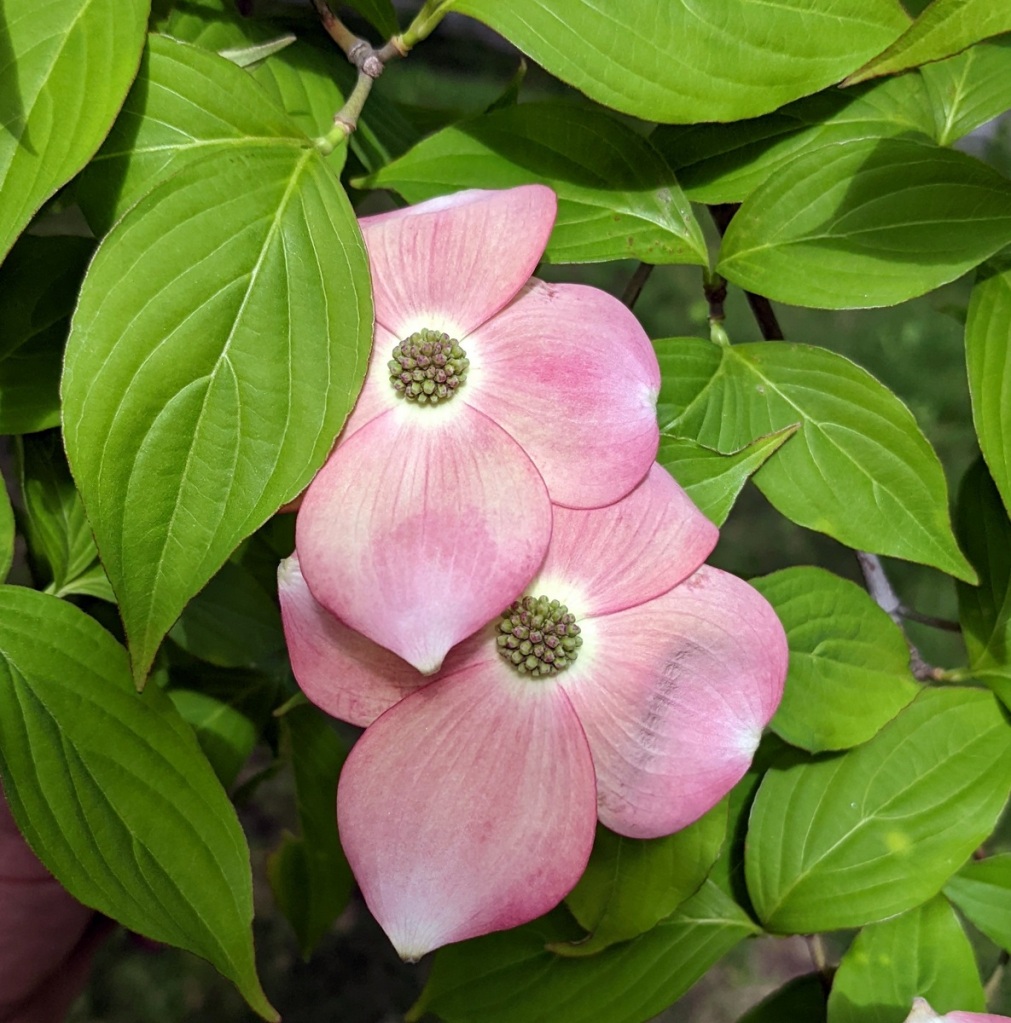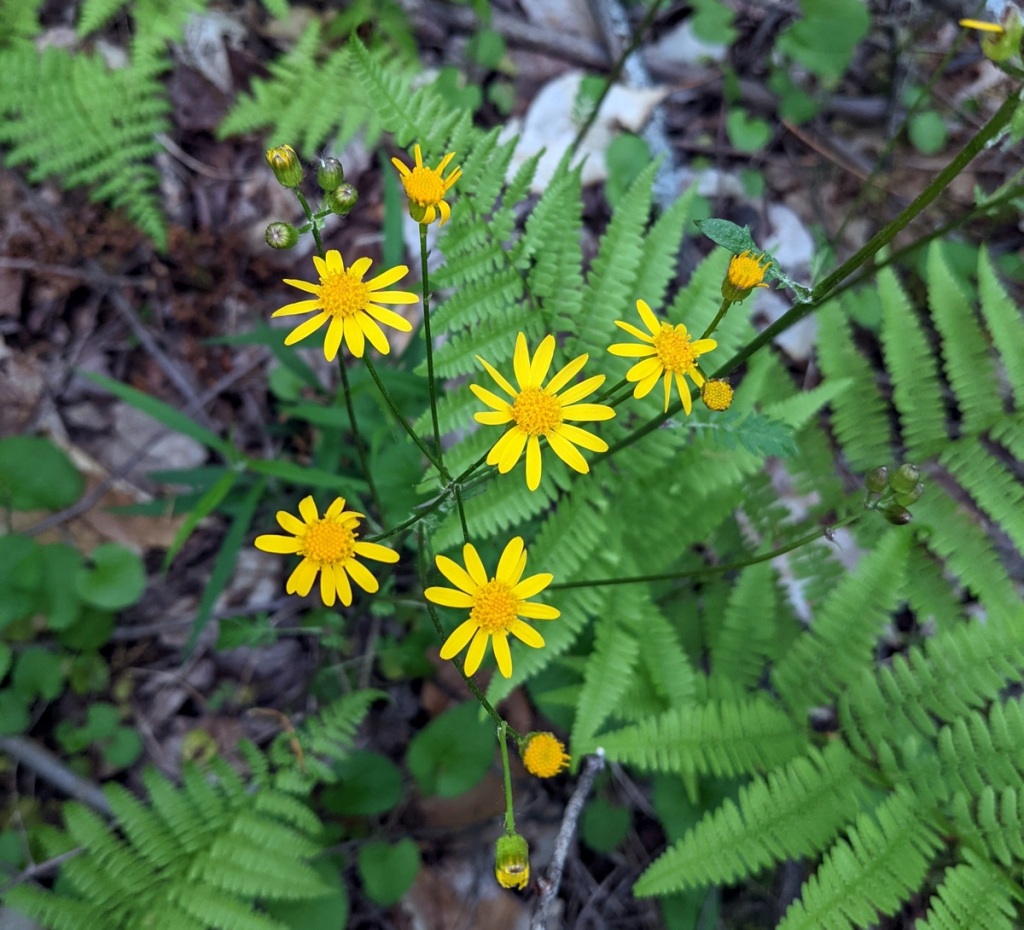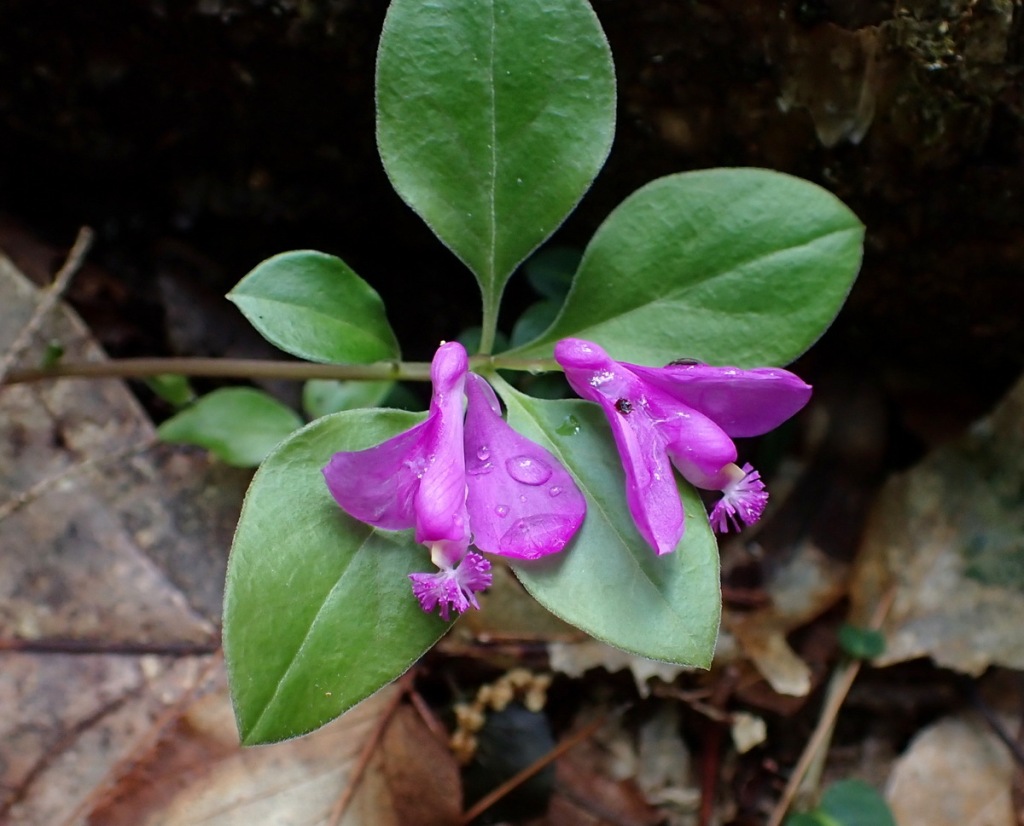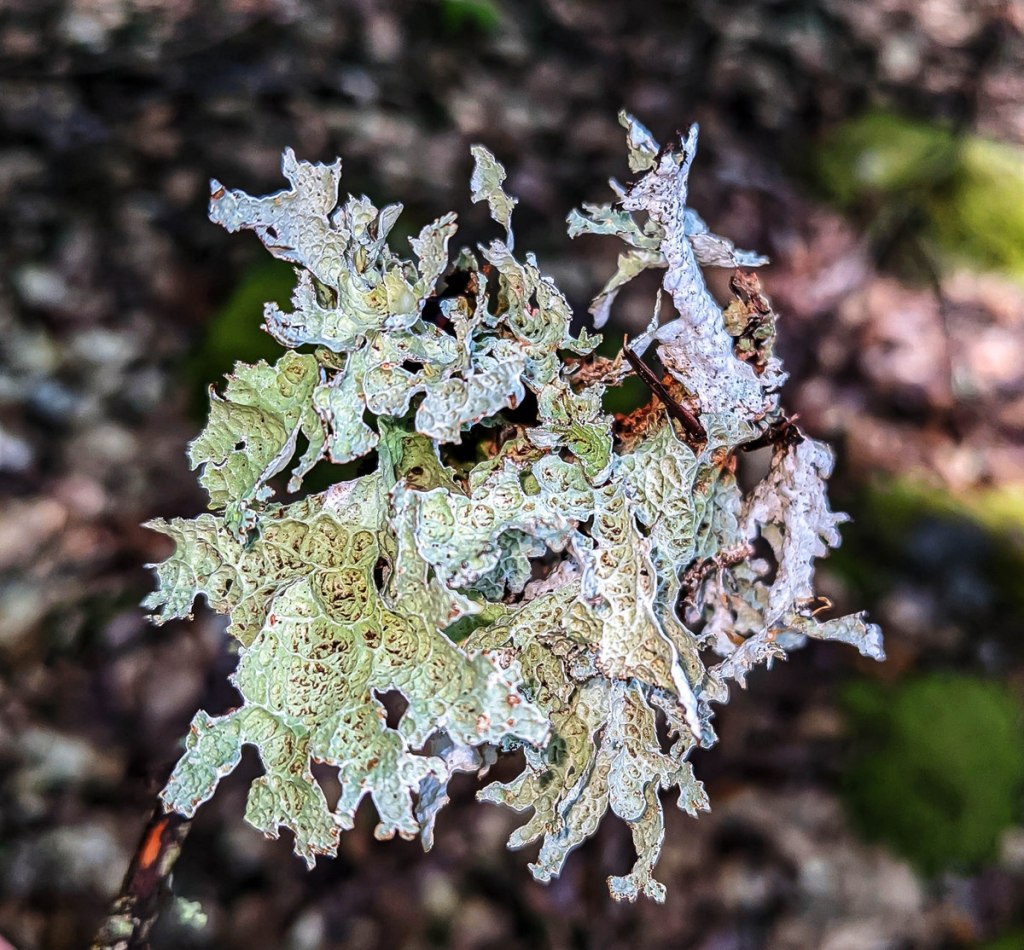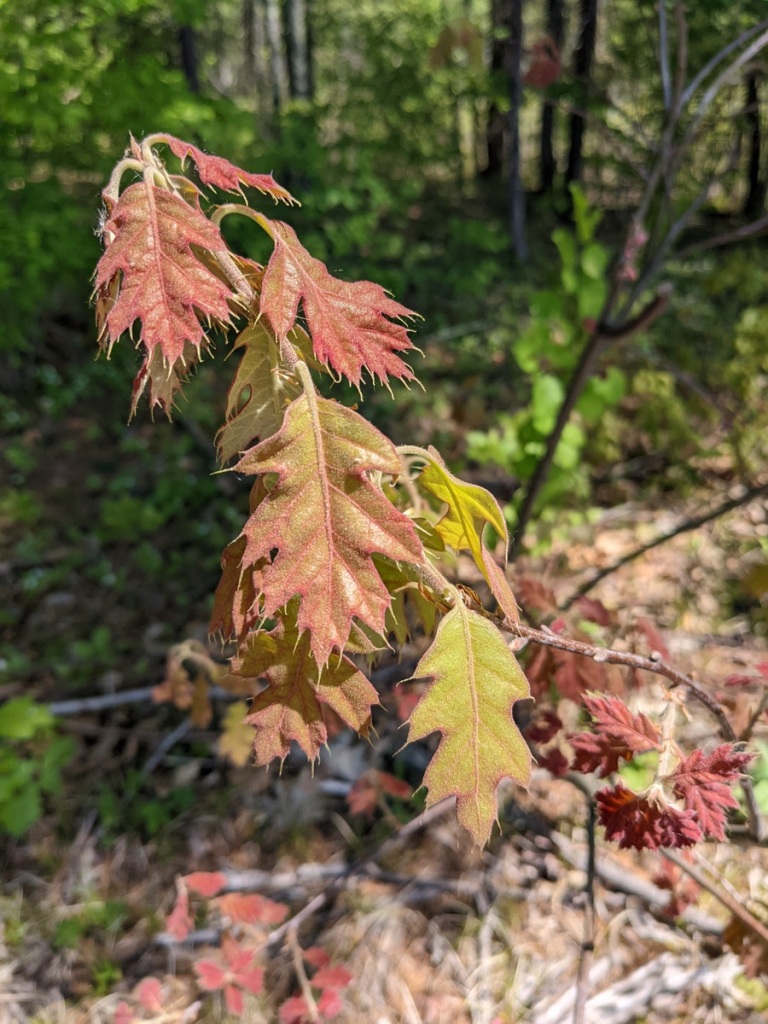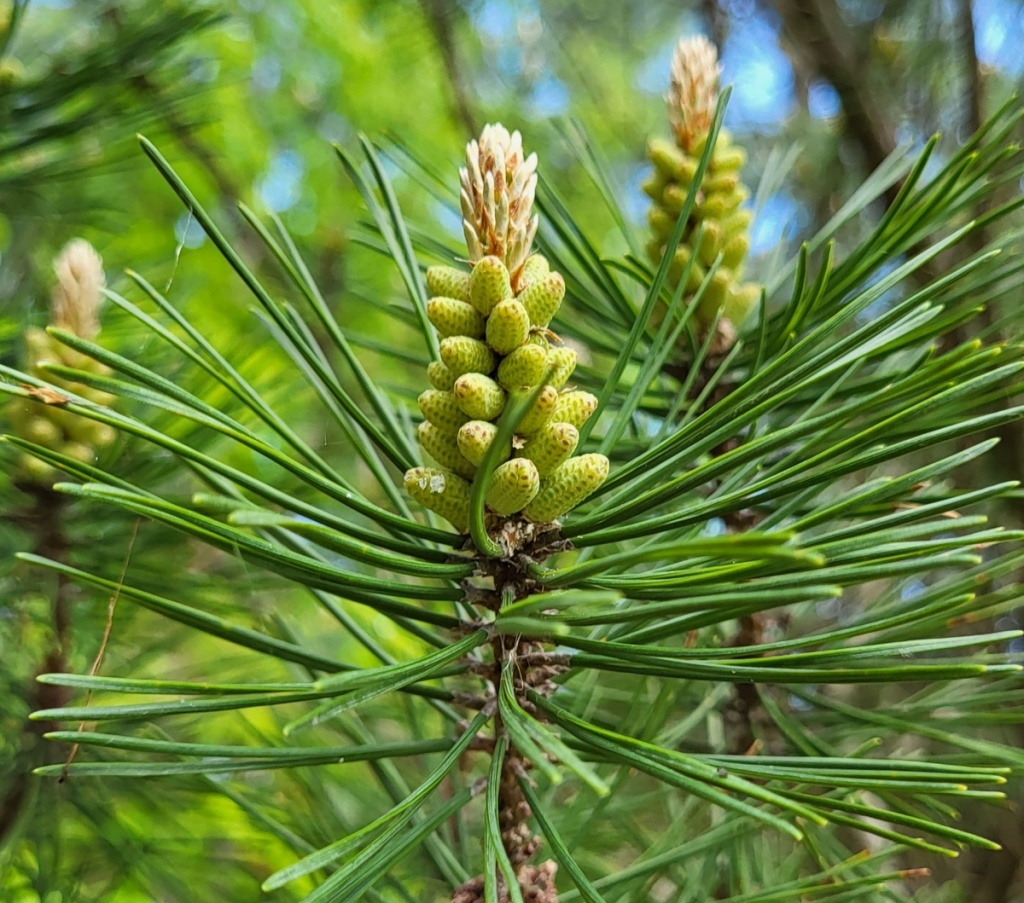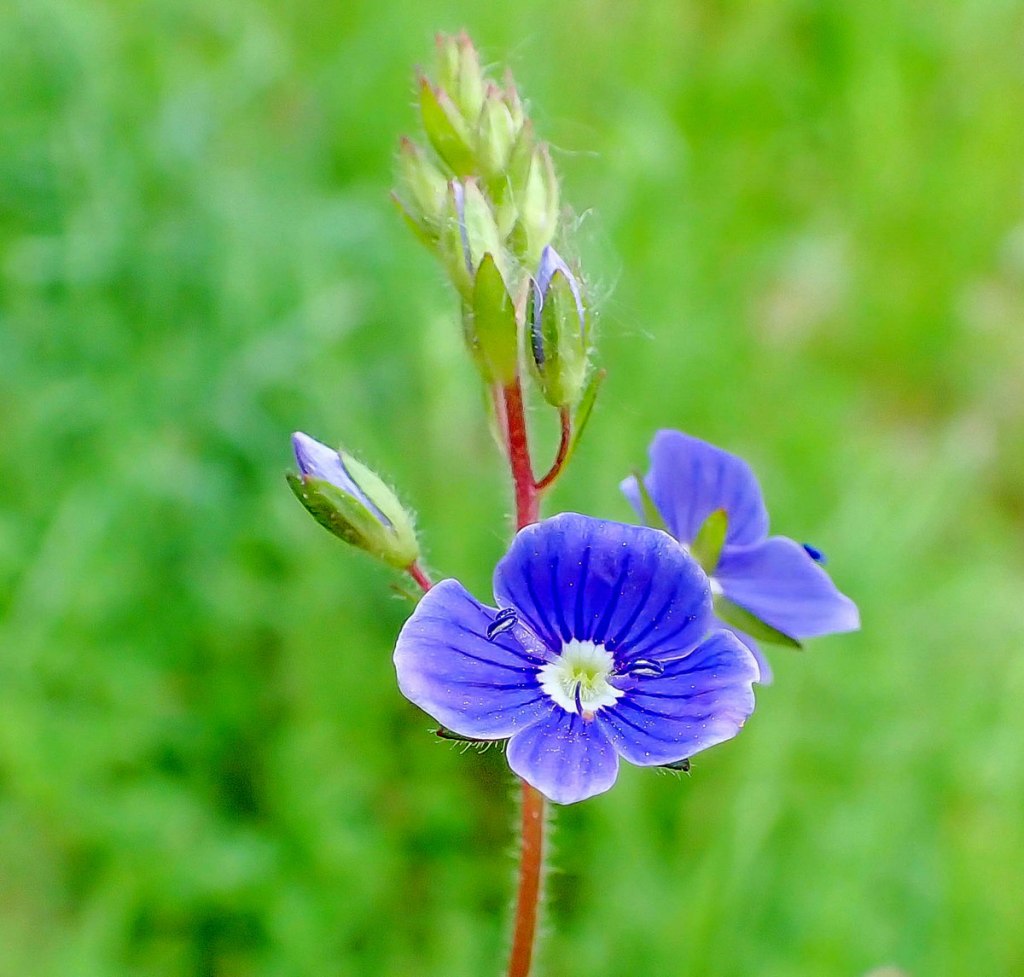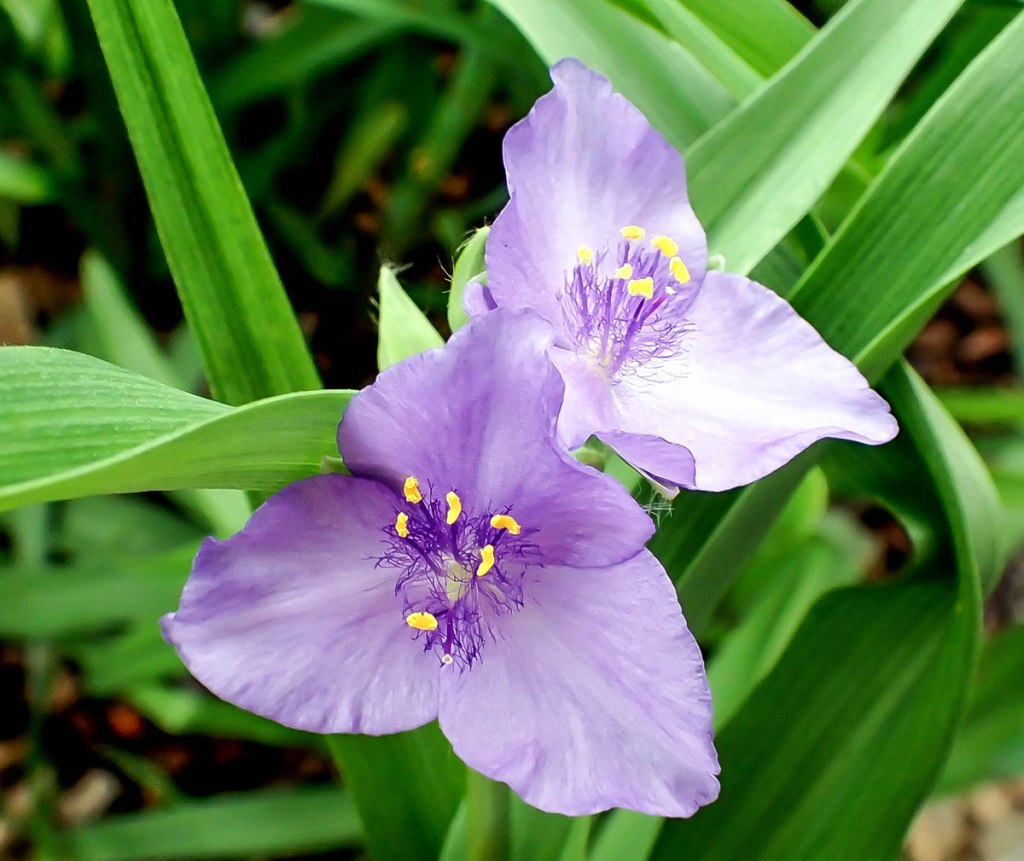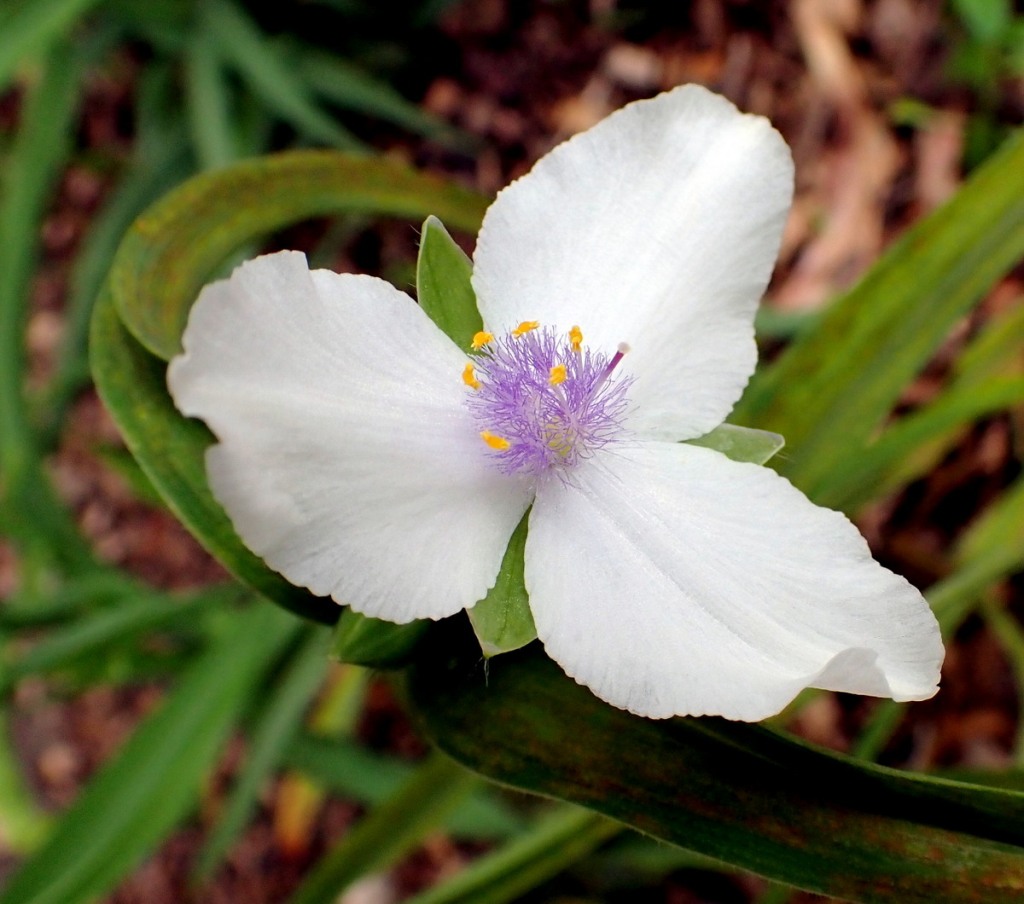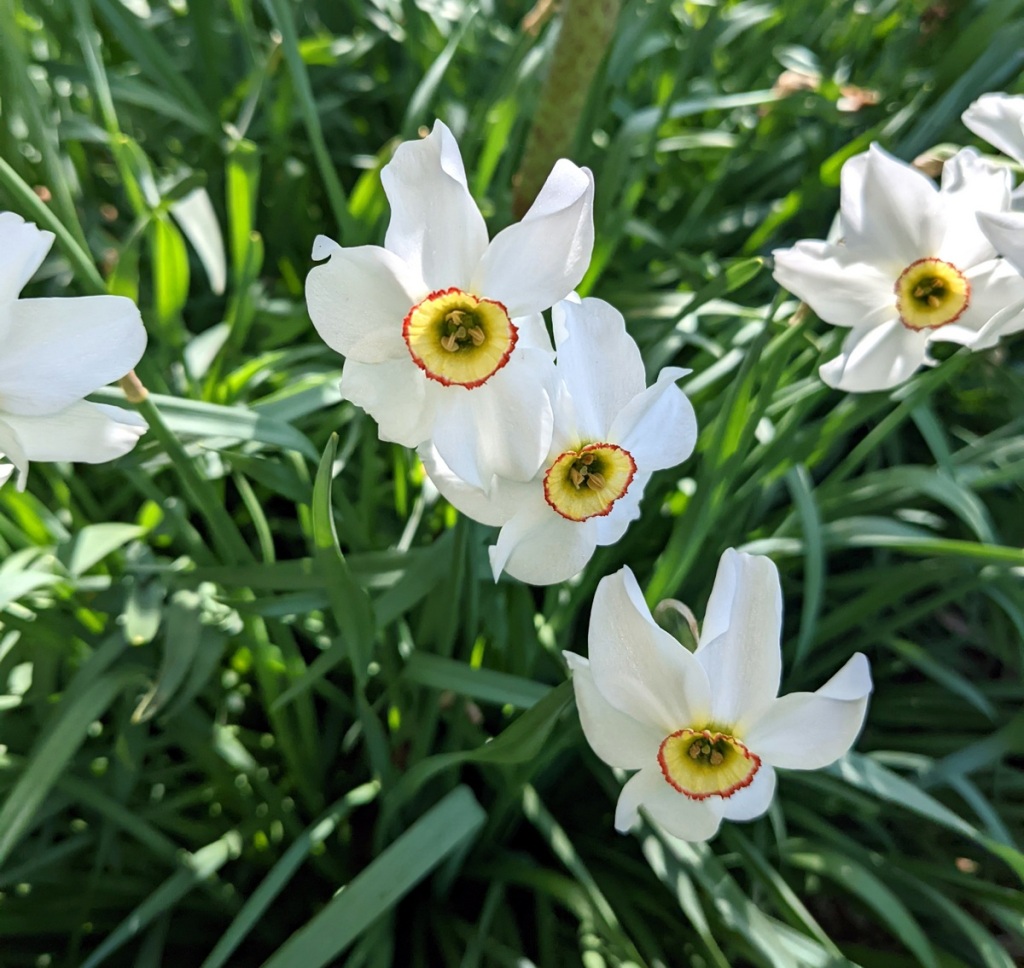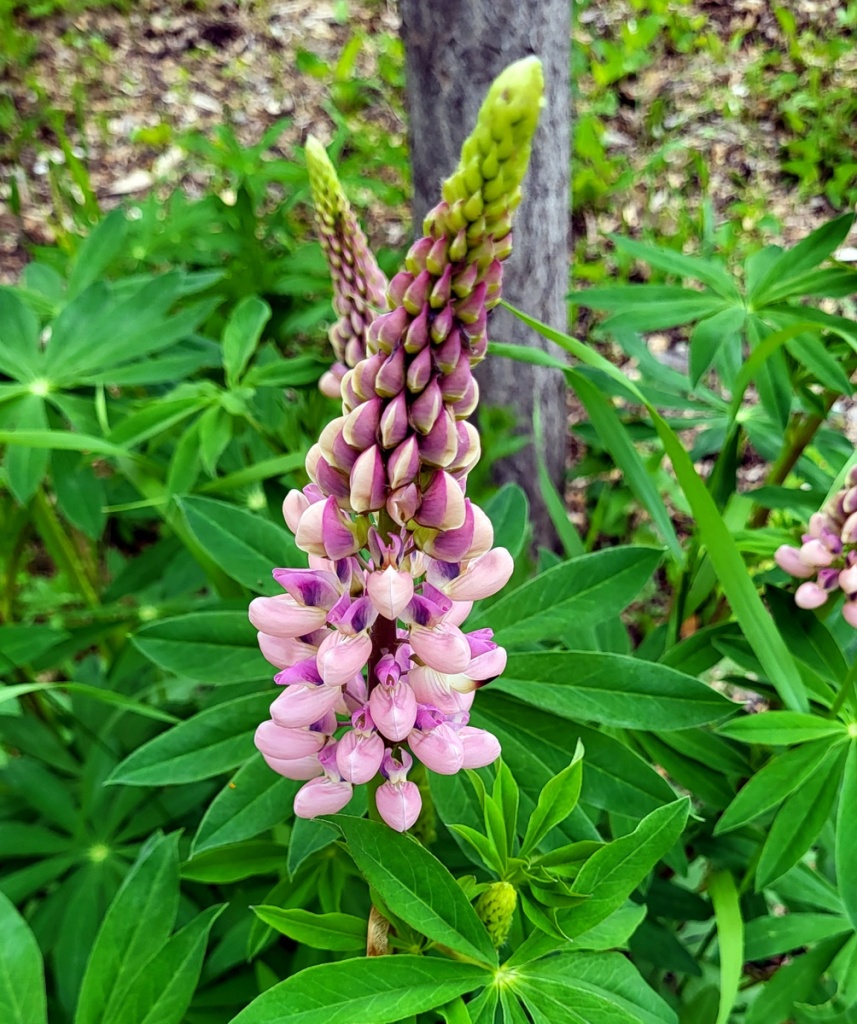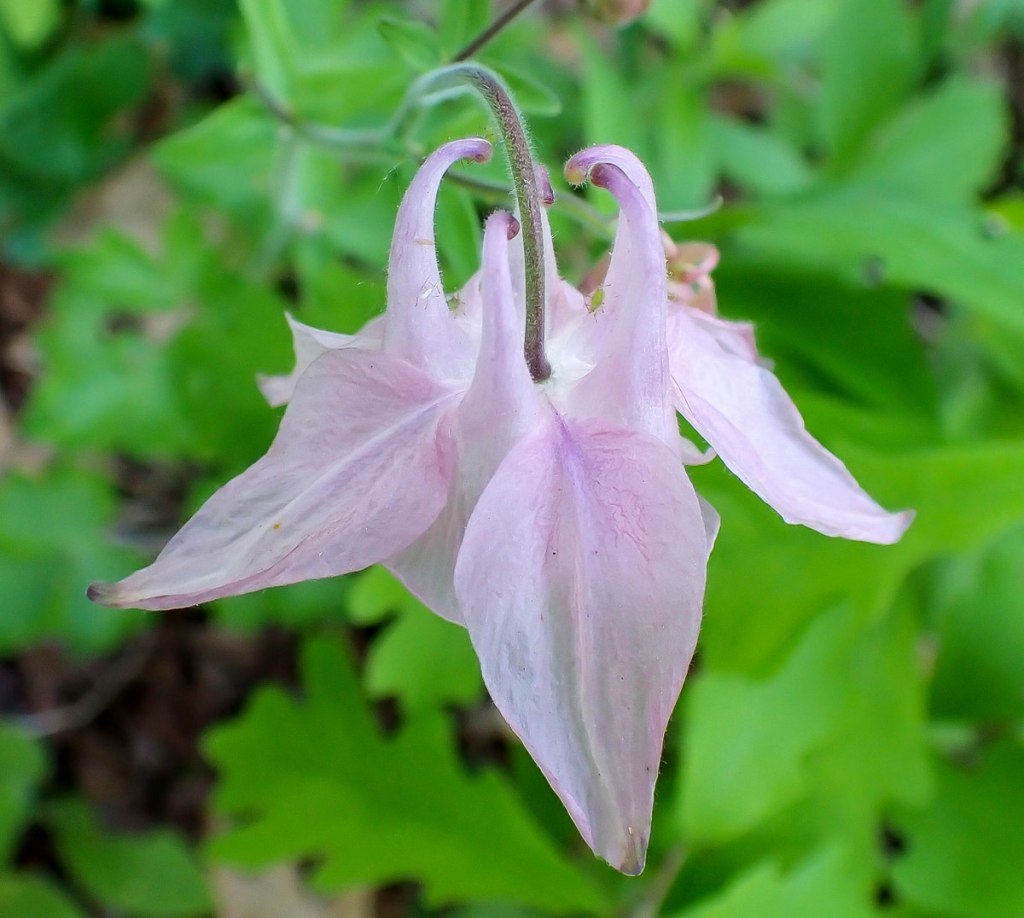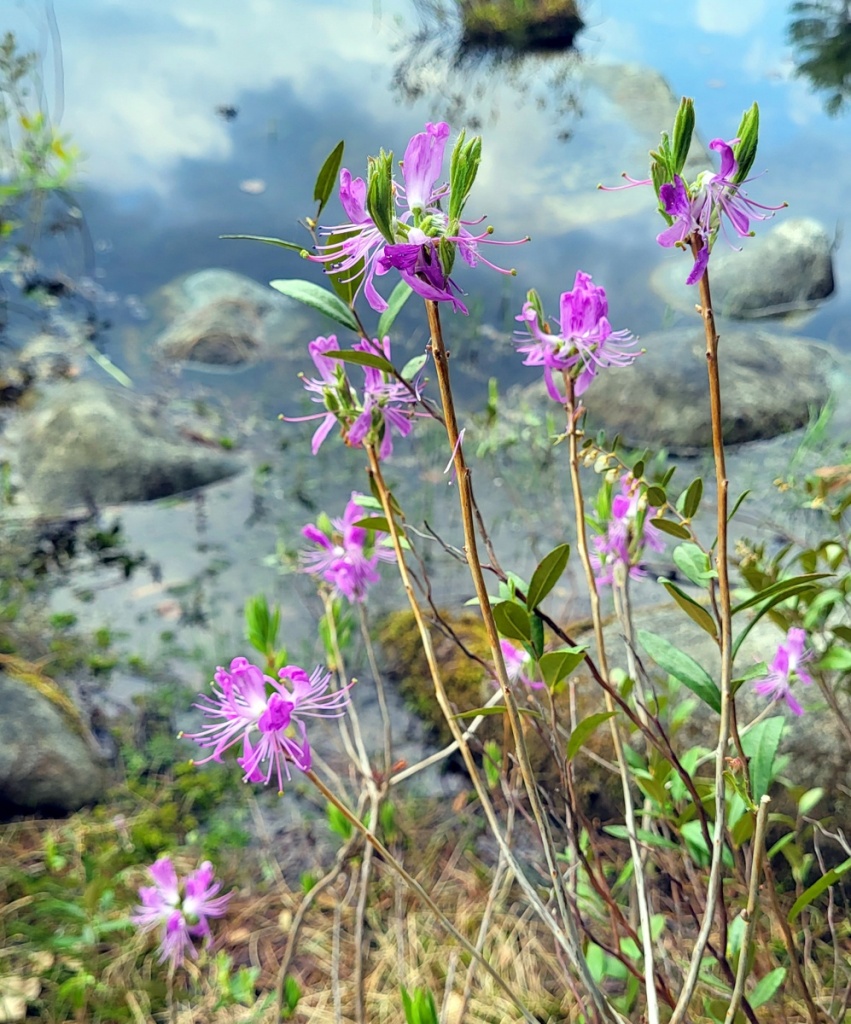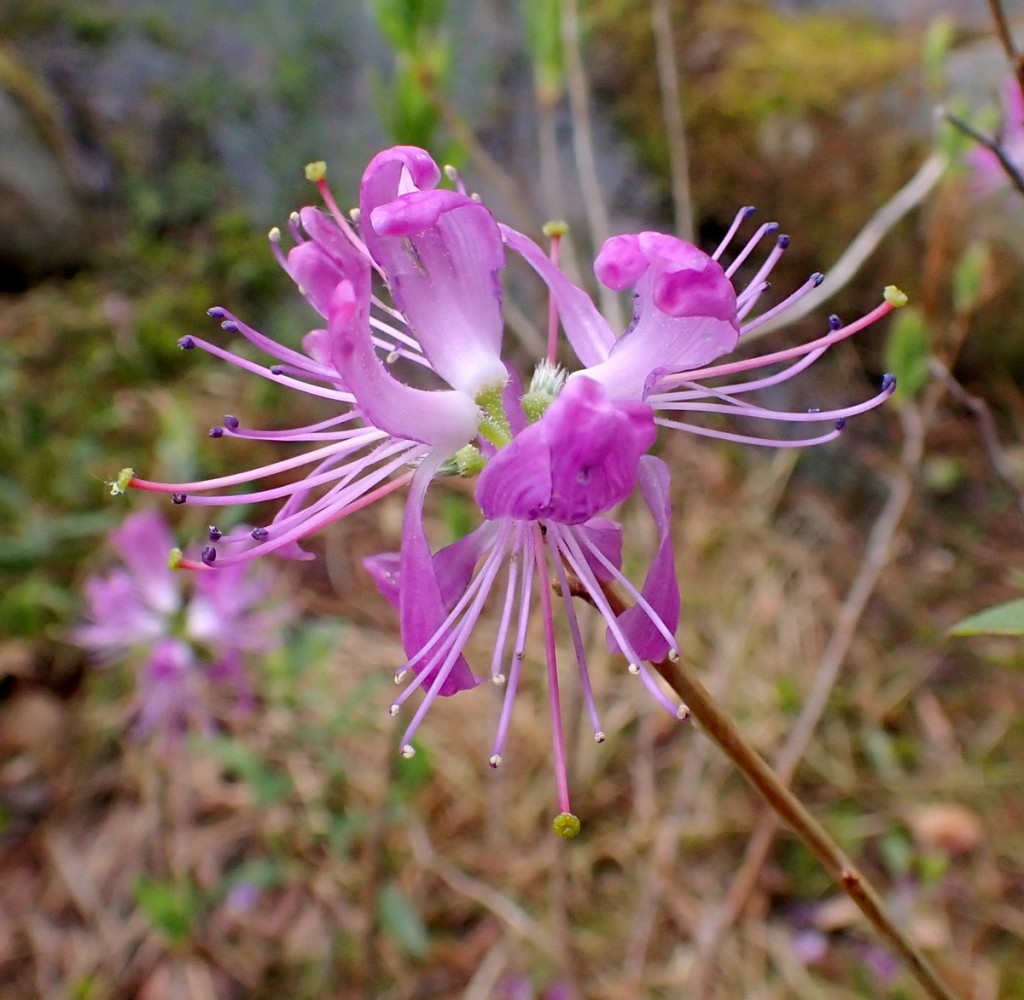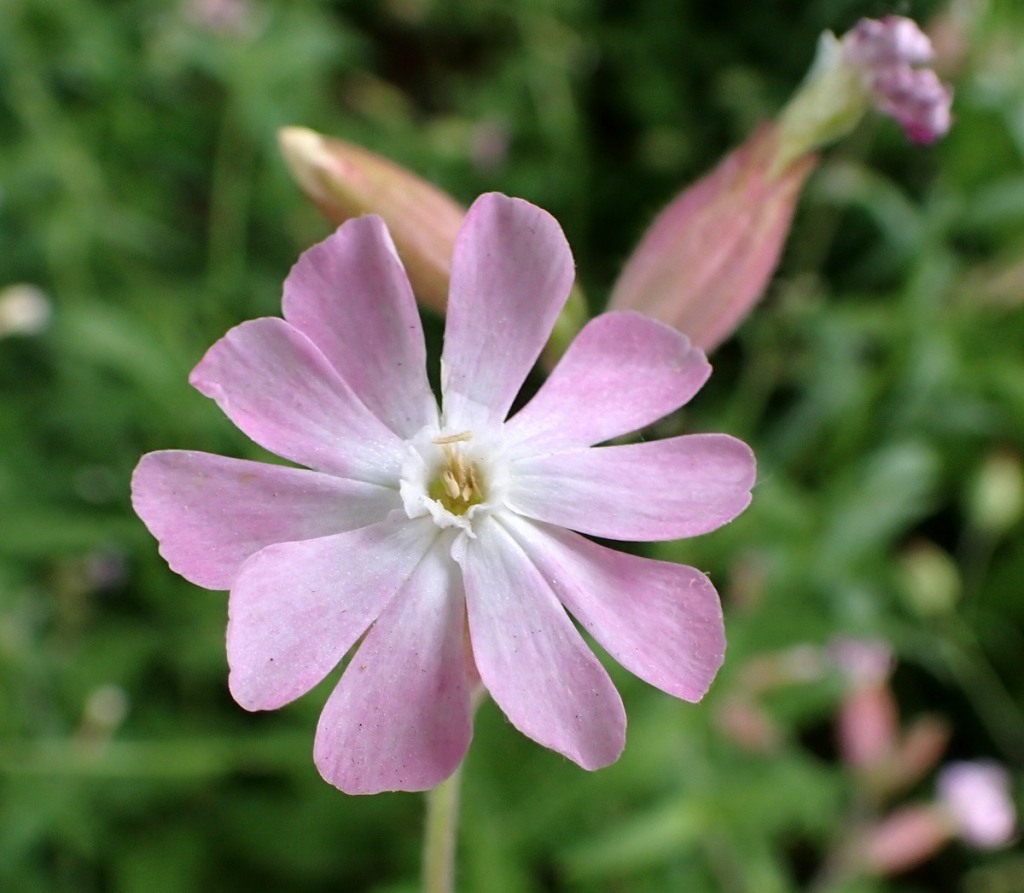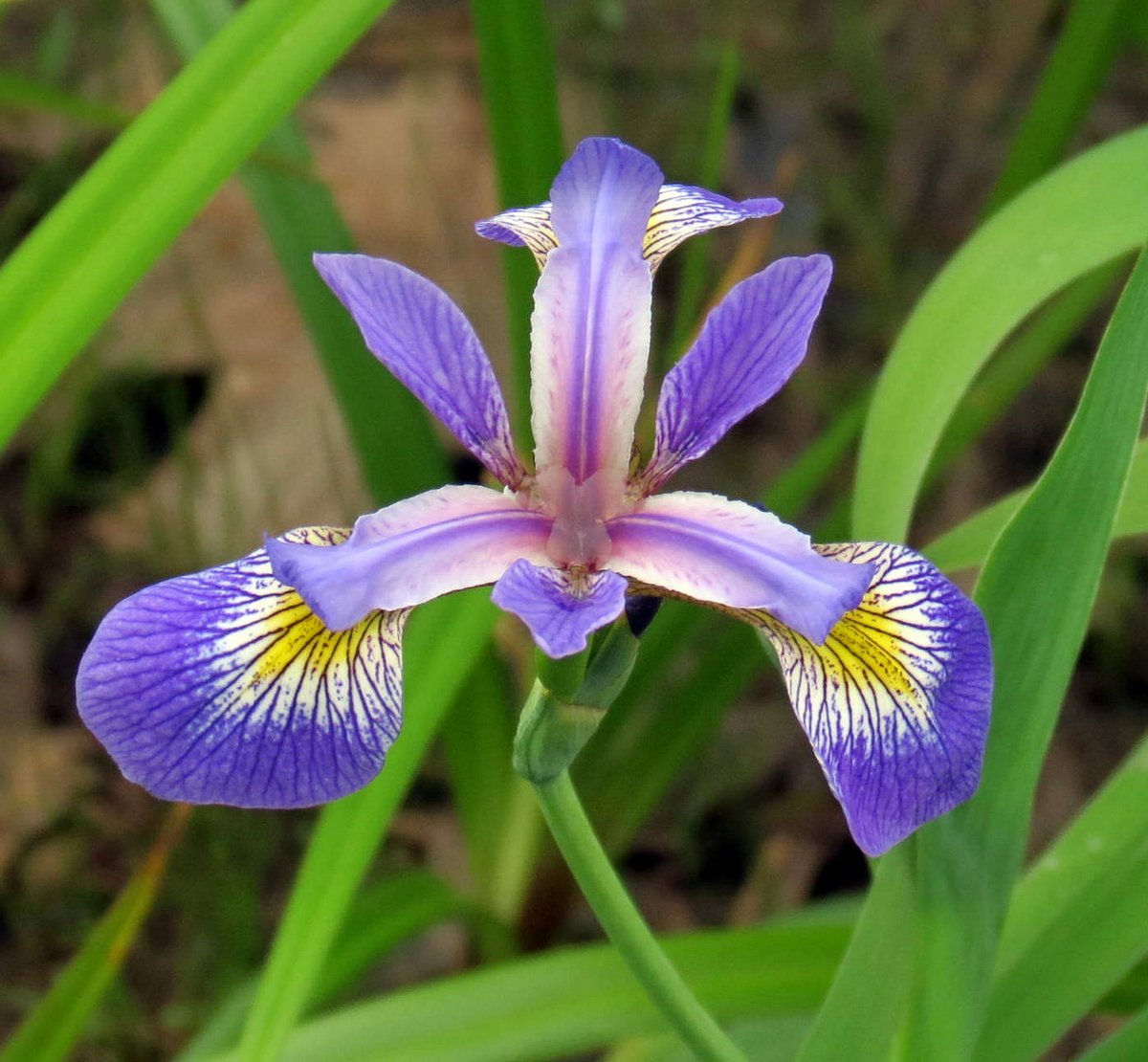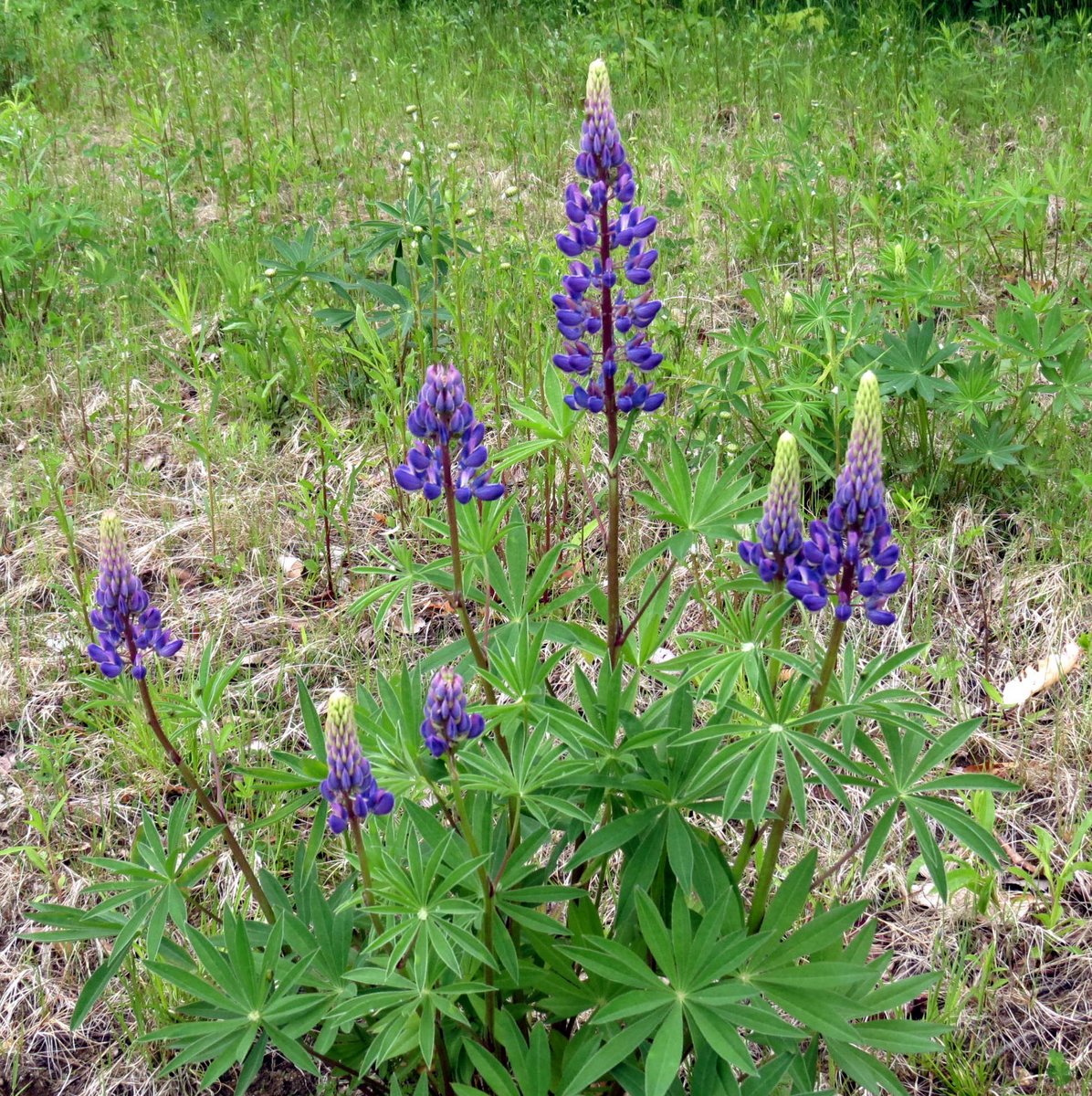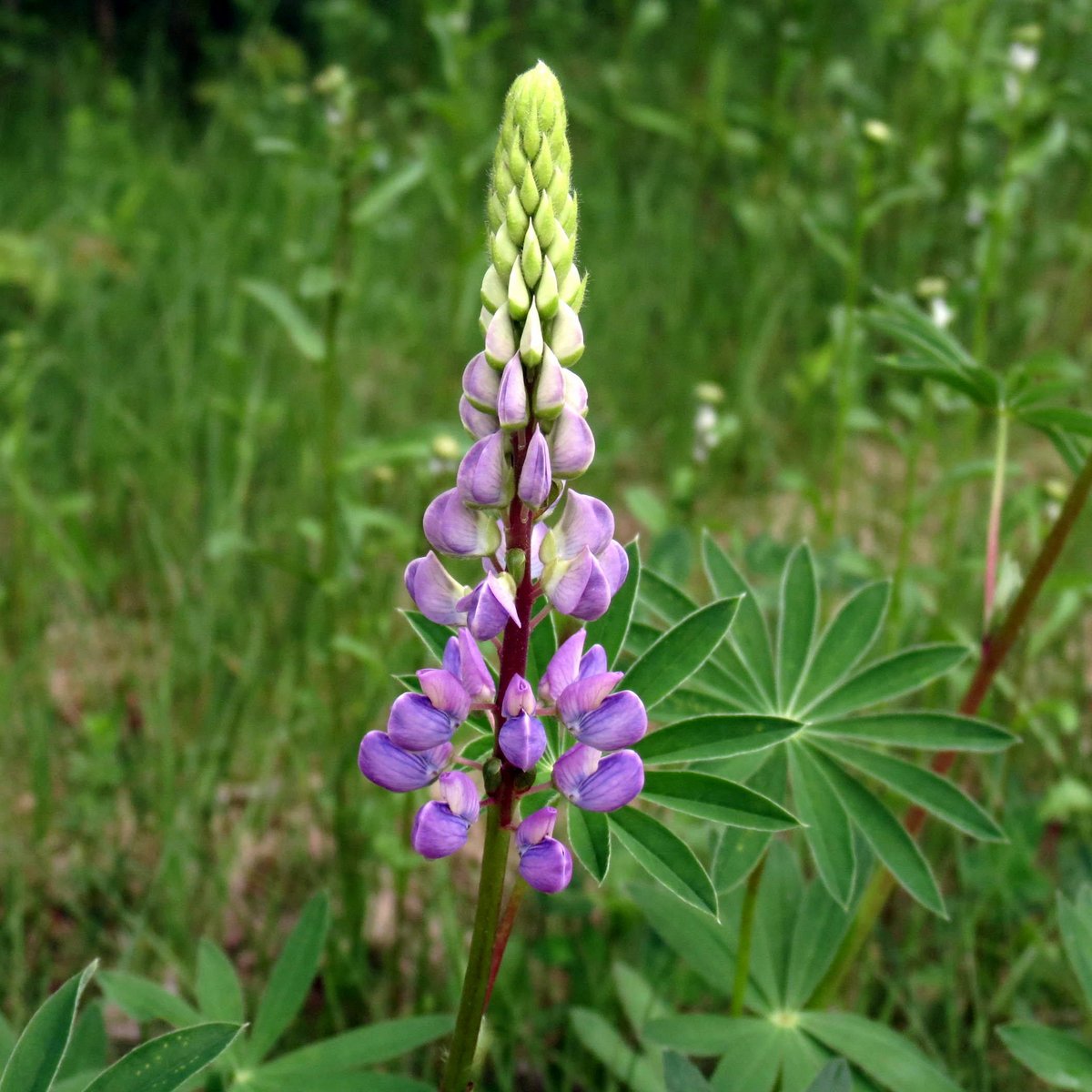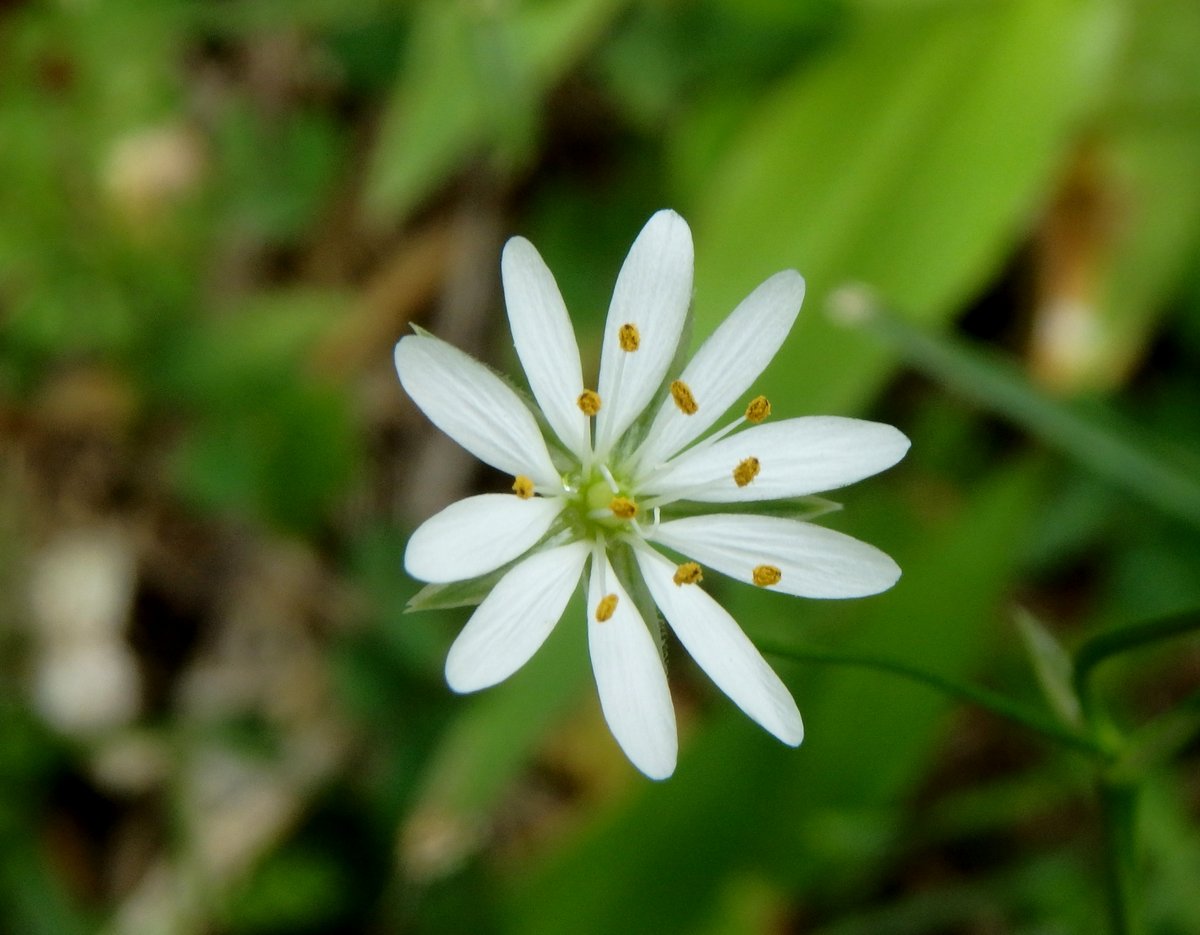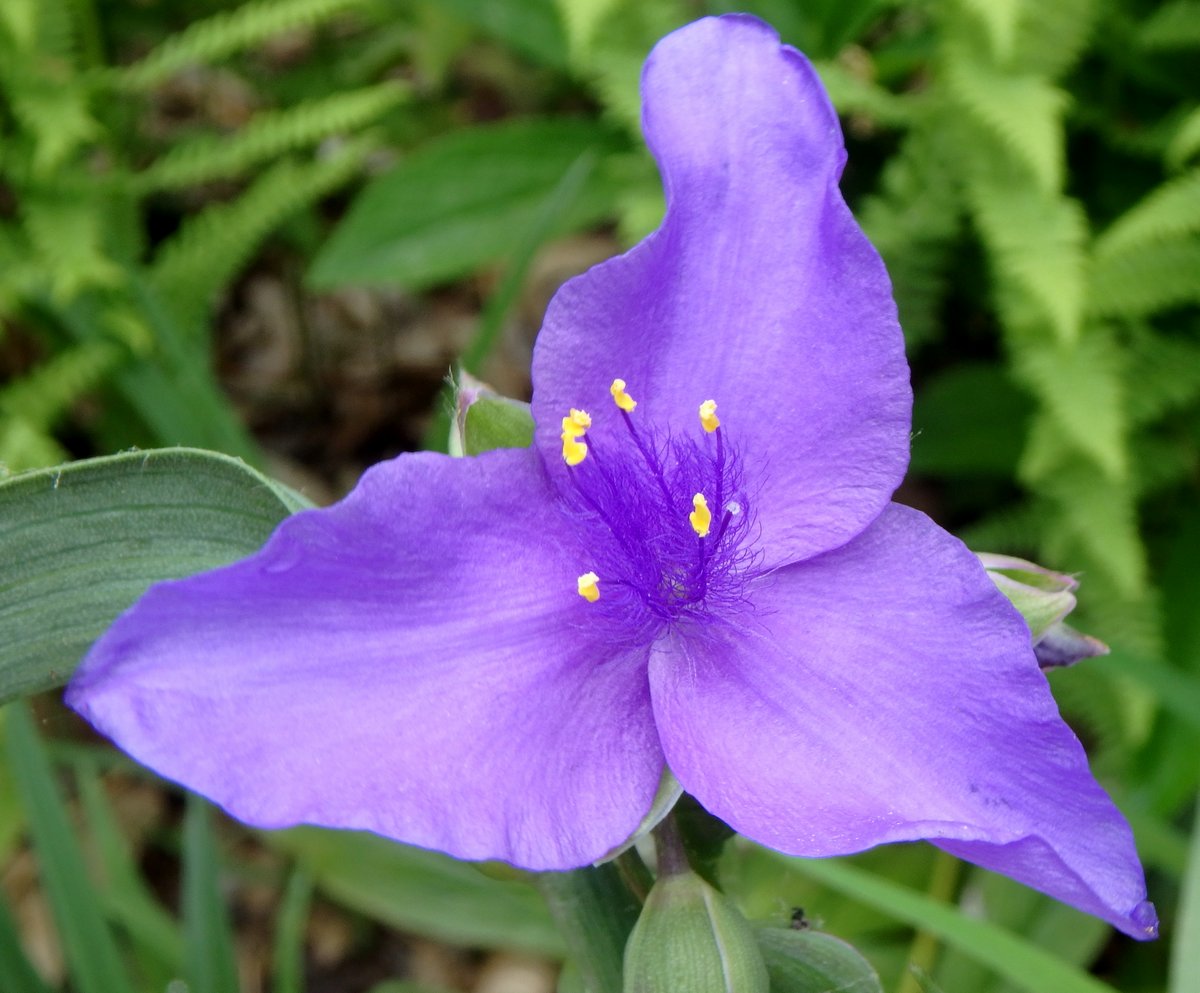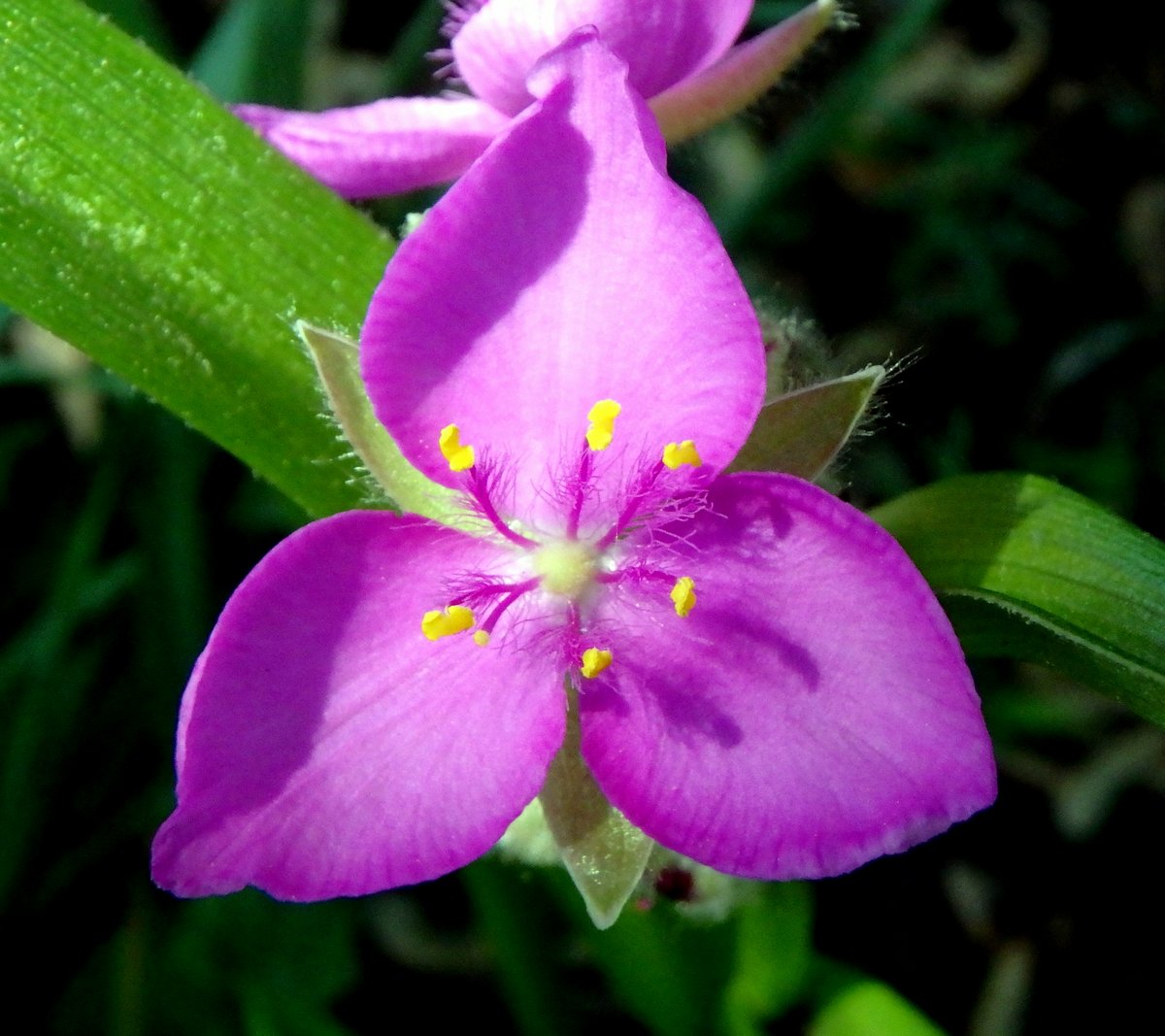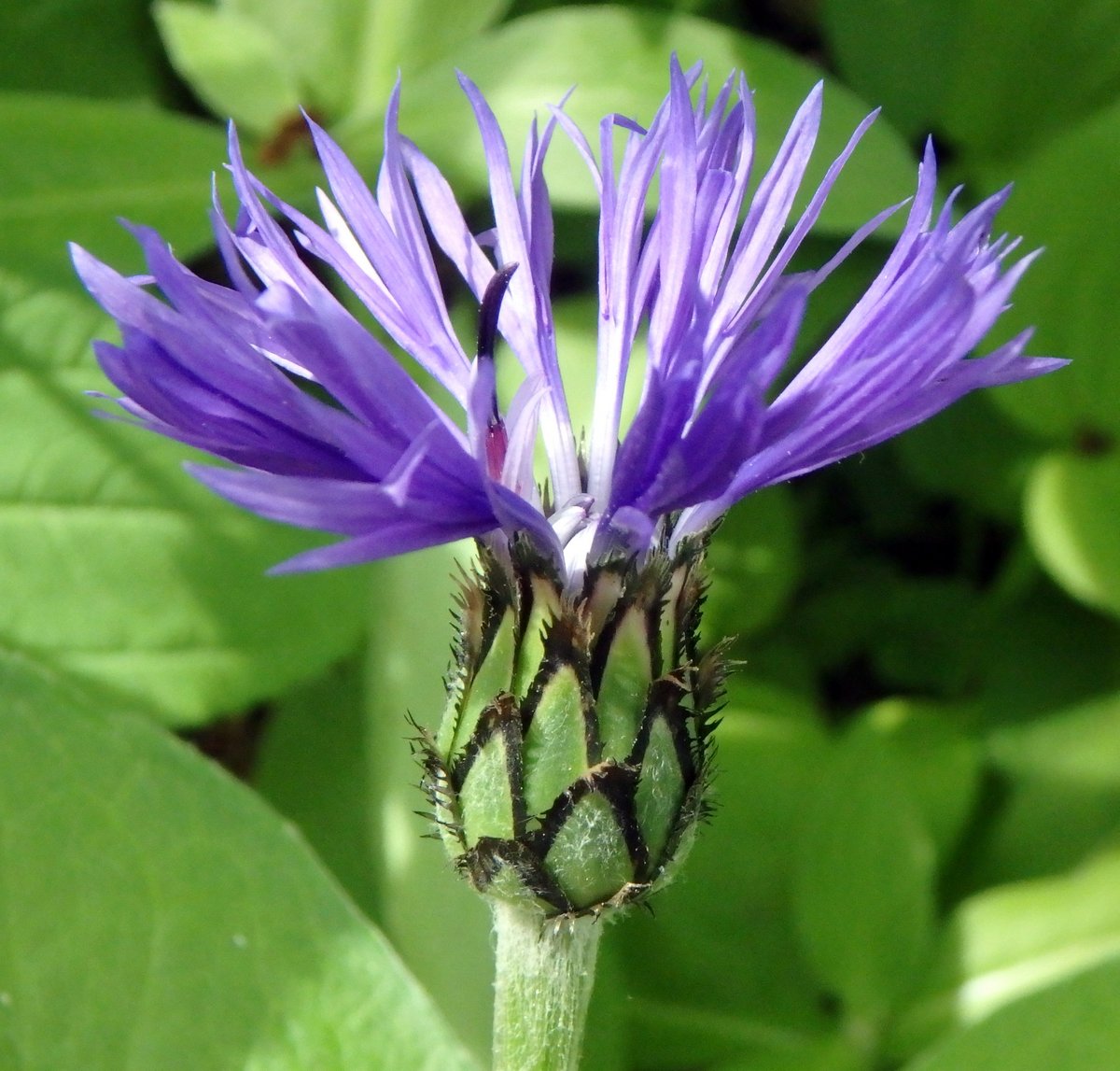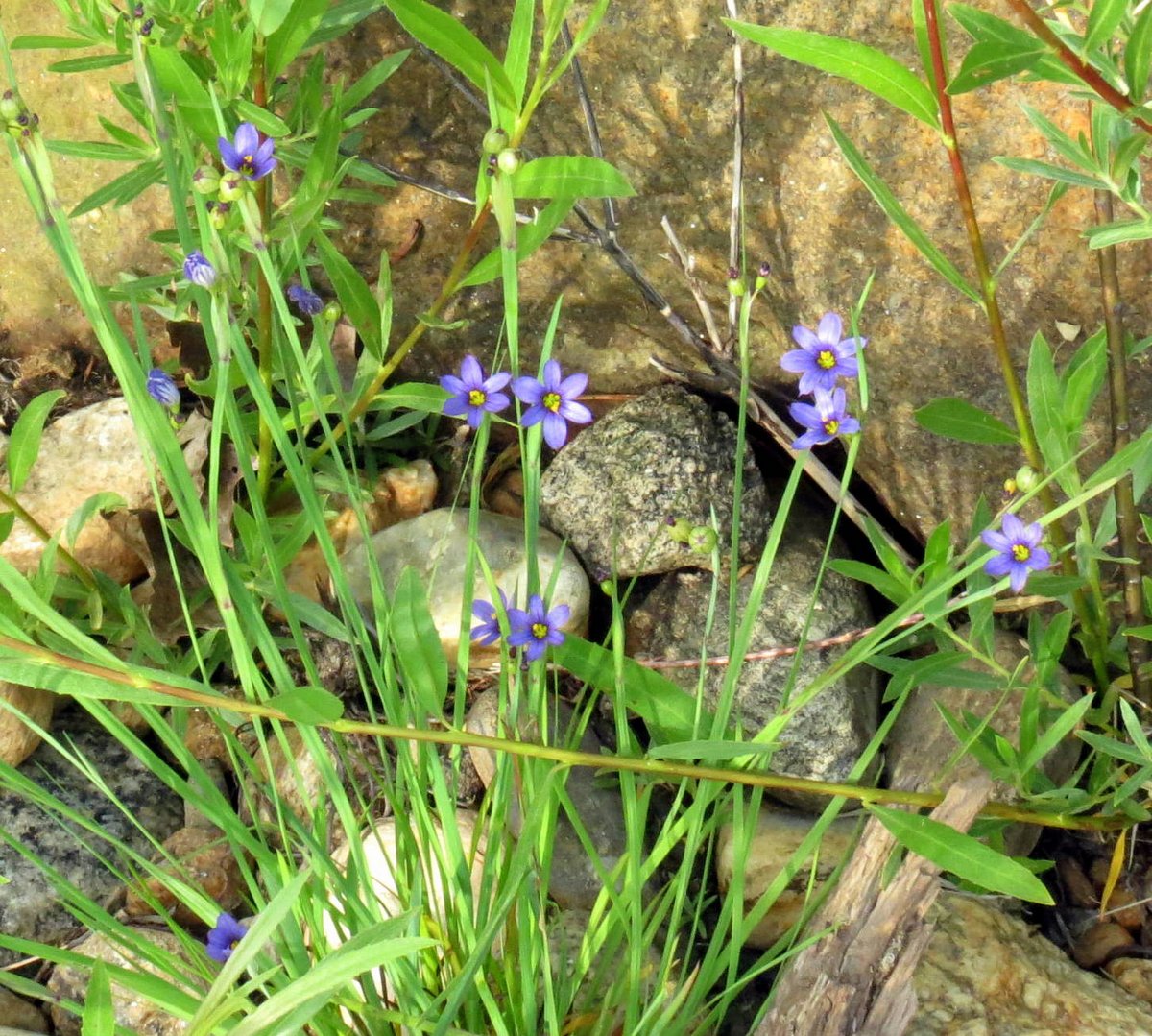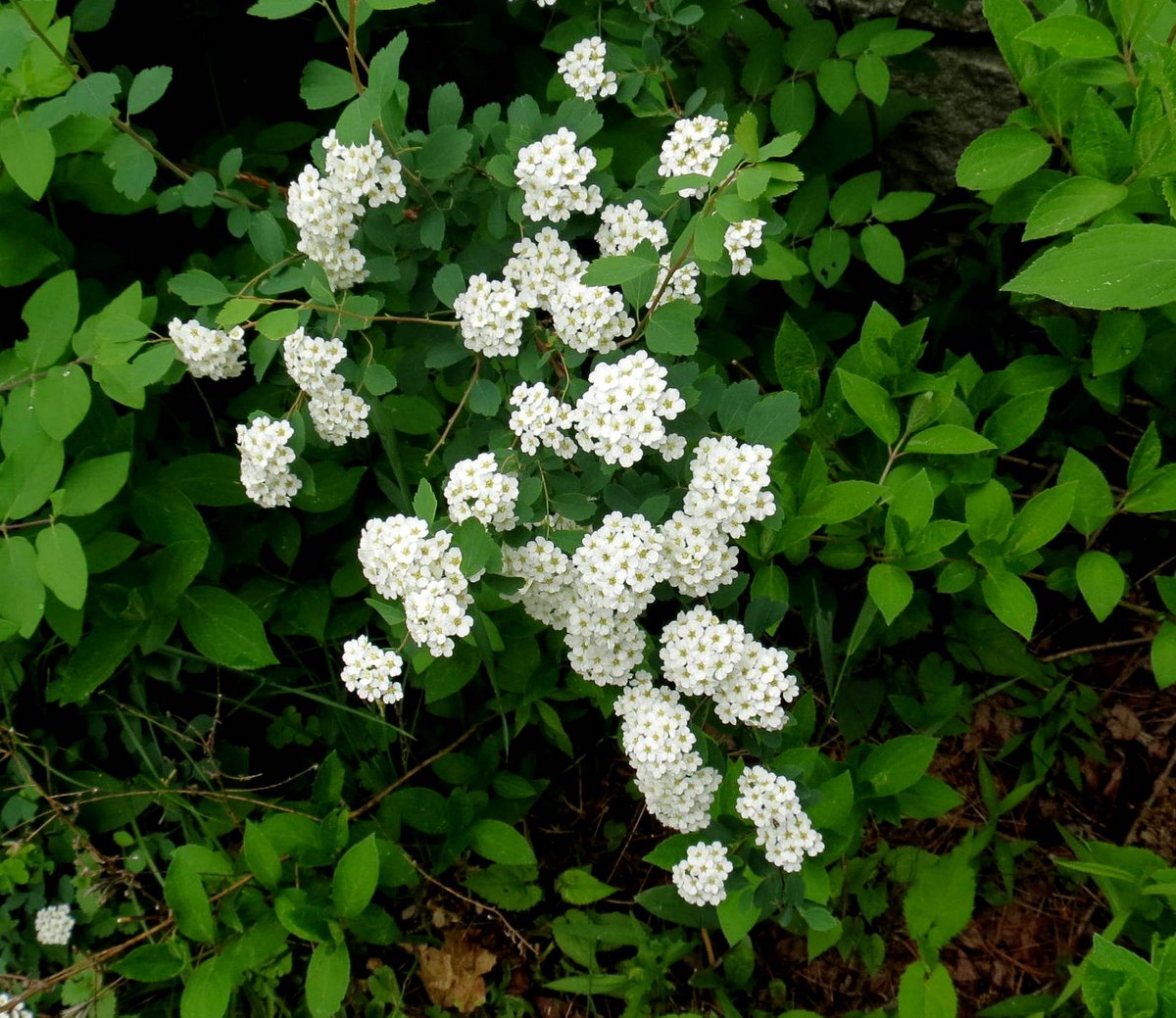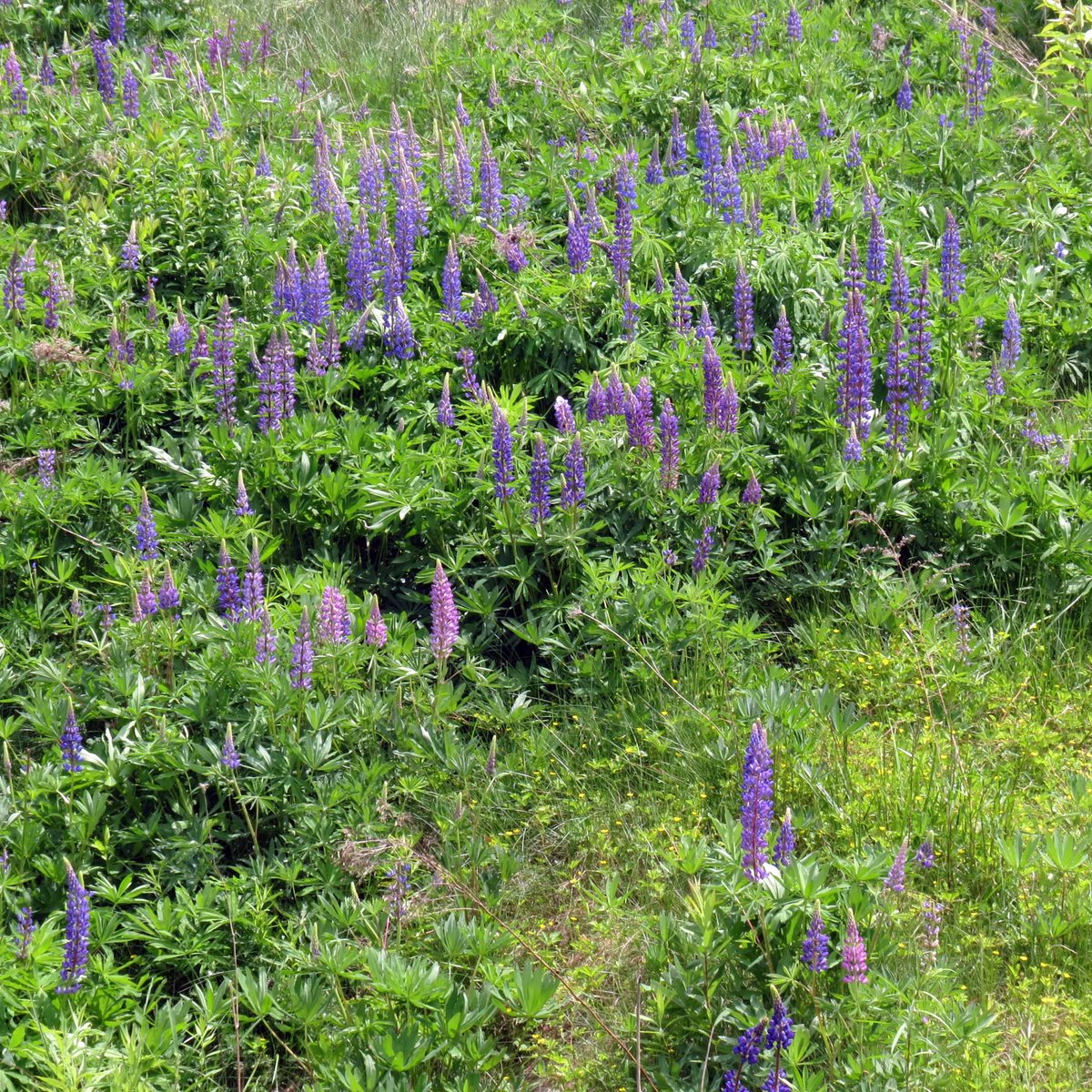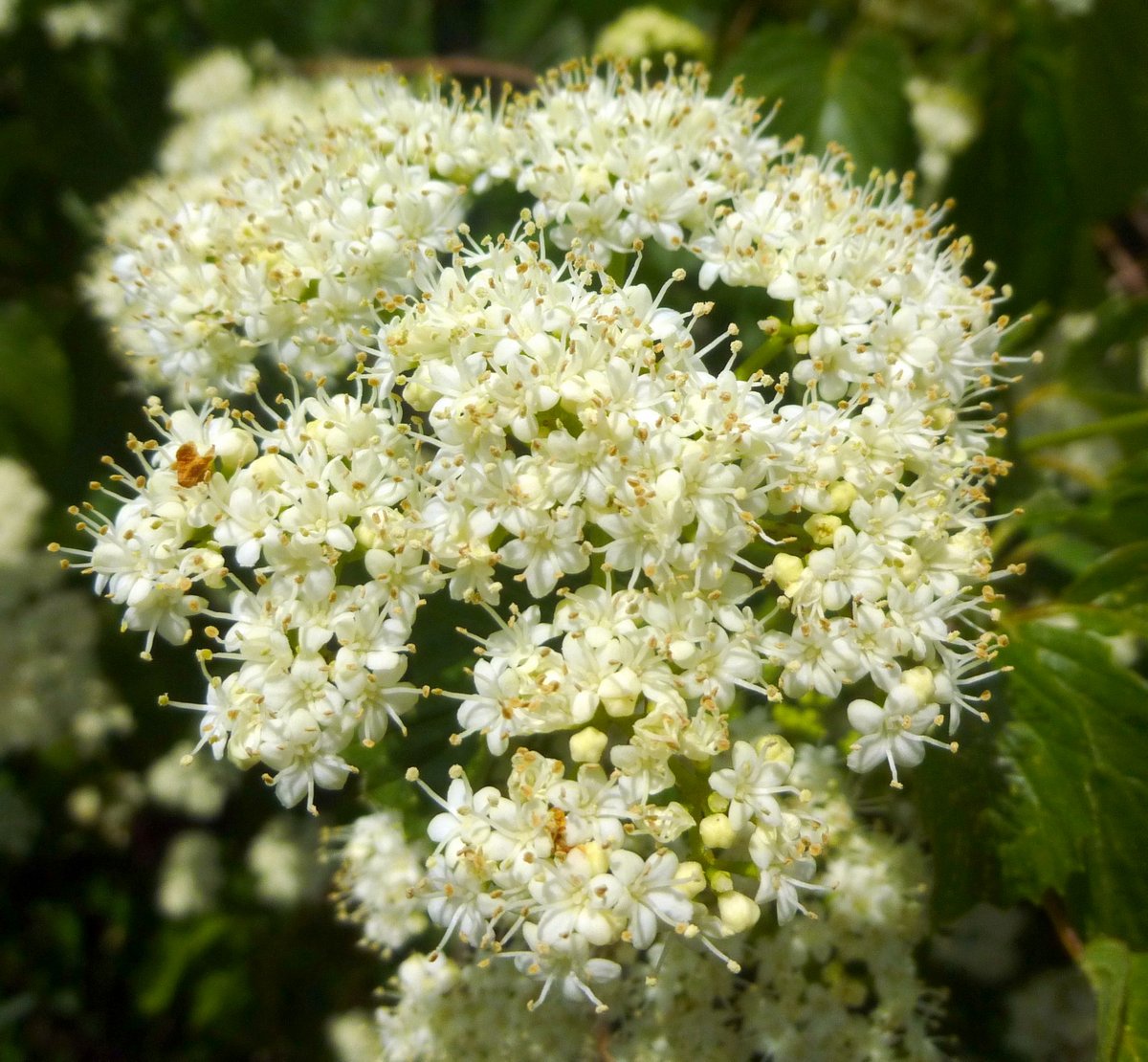
Last week (4/9 – 4/14) we had several wet days. Since what we saw were showers rather than steady rain, I thought I might have a chance to get some photos of what happens here on showery days.

The hellebore are still going strong. I think they’re doing better this year than I’ve ever seen.

I wasn’t sure what the freezing temperatures we had in March would do to the Forsythia buds but as we see here, they didn’t seem to bother them at all. Their bright cheery color can be seen in large numbers on every street in town right now and I am always reminded how very different spring would be without them.

Siberian bugloss is also known as Brunnera macrophylla. It’s a pretty little plant that is blooming now. I first saw it in a local park and I’ve watched it spread over the years, but not to the point of being invasive. Plant breeders have come up with several different colors in the leaves, and all are quite pretty. Soon these plants will be loaded with flowers.

I love the deeply pleated leaves of false hellebore plants, which have just come up. They don’t look like any other plant in the spring forest at this time of year and that’s a good thing, because they are also the most toxic plant found in the spring forest, and people have died from eating them.

The white parts of these wild leeks look somewhat like scallions and taste somewhere between onion and garlic. They are considered a delicacy and are called ramps. They’re a favorite spring vegetable from Quebec to Tennessee, and ramp festivals are held in almost all states on the U.S. east coast and many other countries in the world. I found them just a couple of yards away from the false hellebores. Since both plants come up at the same time I like to show them in the same post when I can because people claim that they confuse the two, even though they look nothing alike. If you scroll up and down between this shot and the previous one I’m sure you’ll wonder as I do, how anyone could possibly confuse these two plants. If you’re a forager you should know false hellebores well.

Bloodroot blossoms will not open in the rain or on very cloudy days but this day was overcast and bright, so they were open or opening when I got there. “There” was an unexpected place; right along the rail trail I used to walk as a boy. Trains were running then though, and I can’t ever remember seeing a bloodroot along the tracks. I’m pretty sure the railroad used herbicides to keep the weeds (and flowers) down. Anyhow, I was lucky to have an overcast sky because the fine veins in bloodroot petals just disappear in sunshine. These are one of our most beautiful spring ephemeral flowers, here for just a short time. Their common name comes from the blood red sap found in their roots, which Native Americans once used to paint both themselves and their horses.

Every now and then the sun would break through the clouds, but not often. I was glad to see it lighting up these myrtle flowers one day. This is one of the old “shared” plants that passed from neighbor to neighbor in the early 1800s. Along with lilacs, peonies, iris, and orange daylilies it’s a plant that you find out in the middle of nowhere growing beside old cellar holes. After 200 years of growing on their own the plants still bloom as if the house was still standing and they were still being tended.

There is a big difference between looking and actually seeing, and if we just stop for a moment beautiful things like raindrops on lupine leaves can show us that difference. As Henry David Thoreau once said: It’s not what you look at that matters, it’s what you see.

I like the dark, loose flowers on this hyacinth. I used to know its name but that doesn’t matter. It’s a beautiful thing and so different from other hyacinths.

Tulips are up and blooming. These small red ones are the first I’ve seen but there are lots more coming.

Ornamental cherry trees just started blossoming. These are the first I’ve seen. We have mostly white and pink.

The magnolias are blooming beautifully this year but you can find frost burns here and there on them if you look closely.

Petals had fallen from another pure white magnolia blossom so I could see into its heart. It was as beautiful without its petals as it was with them.

One day I decided to go to the wetlands because nature seems to be really humming there lately. I sometimes stop at this picnic table to see if I can get a feel for what’s going on. There is a road to the immediate right out of view and on the day this photo was taken my car was parked on the other side of it so I wouldn’t have to go far if it rained.

I met a common grackle on the picnic table one showery day. “Mind if I sit with you?” I asked. It didn’t answer but apparently it did mind because it flew up and landed on a branch. Last time I saw it, it was high up in the top of a pine tree.

After I had sat on the picnic table for a while a cute little yellow bird landed in a bush beside it. “Look at my full belly,” it said. “Yes I see,” I replied. “It looks like you’ve had plenty to eat. You look almost like a pear with wings.”

The little bird had to smile at the thought of itself as a flying pear. Though it didn’t introduce itself I think it might have been a palm warbler, but I can never be 100% certain with birds. I don’t know why anything with the word “palm” in its name would be in New Hampshire in April but that’s what Google lens says. If it’s wrong I hope someone will let me know.

An eastern phoebe (I think) landed on a cattail in front of me, looking thin and forlorn. “I wish I had a full belly,” it said. “Maybe you just need to try a little harder” I suggested. “Watch your cousin over there and see what happens. There seems to be plenty of food for everyone right now.”
There had been a week long insect hatching taking place in the pond and though I didn’t know for sure at this point, I thought the insects might be mayflies. Mayflies can hatch in the billions and sometimes the swarms are so large they can even be seen on radar.

The phoebe’s cousin looked fit and trim and as we watched it would hop off the cattail stem and just fall like dead weight straight down to the surface of the water, where it would spread its wings at the last minute and scoop up an insect. “Try doing that,” I suggested to the thin phoebe. The palm warblers were doing the same thing but I noticed that they would also fly up into the air occasionally. They were all busy little birds, constantly moving.

Overhead was a flock of hundreds of swallows, swooping and diving and barrel rolling through the sky over the pond, eating any hapless insects that flew from the pond surface. They were also making other birds quite agitated. Many of last year’s cattail stems were armed with male red winged blackbirds, all looking up. If a swallow got too close to a nesting site, off the blackbird would go at top speed like a missile, chasing the swallow and matching its flight pattern move for move, plucking at its tail feathers all the way.
I’ve accidentally stumbled into red winged blackbird nesting sites so I didn’t envy the swallows; these blackbirds are fierce defenders of their territory. They have turned me around in a hurry by hovering right in front of my face and beating on my head and face with wildly flapping wings. They have no fear.

This not very good shot shows just a very few of the hundreds of swallows that swarmed together over the pond in a feeding frenzy.

On the pond surface were Canada geese, mallards, hooded mergansers, wood ducks like the pair in this photo, and I don’t know what else. As I sat on the picnic table I had to wonder how word of these hatchings traveled so quickly through nature. It seemed like a messaging system had let everyone know, because all these birds would show up in no time at all when the insects appeared. It was an amazing thing to watch, and I learned quite a lot by just sitting and watching. Male wood ducks are usually very shy and hide away in coves and backwaters where they can’t be seen, yet here they were out in plain sight with people nearby. That’s how strong the pull of easy food pickings was.

It was hard to get a good shot of the wood ducks because they never stopped moving. They and all the other waterfowl swam quickly back and forth, vacuuming up as many insects as they could, just as this one was doing. They must have been eating them by the thousands, and if you figure in all the swallows overhead and the smaller birds in the bushes, along with all the fish, frogs, turtles, and other life in the pond, you begin to see that it’s a miracle that any of the insects survive. But they do survive, and they have for hundreds of millions of years. Mayflies, it is said, are among the most ancient of insects still living. And it’s a good thing they’re still with us; just look at all the life they help support. Though called “mayflies” I’ve read that they can appear at any time from April to October.

It started to rain again and as I got back to the car and reached for the door handle I saw an insect that had been resting on the car fly away. I still can’t say for certain because I only got a quick glimpse, but it looked to me like a mayfly. Other possibilities are stoneflies and caddisflies but what I saw didn’t look like either of those. They’re bigger than mayflies.
Non biting midges are another good possibility. Midge fly pupae swim to the surface and emerge as adults, which look a lot like mosquitoes. They mate in a swarm shortly after becoming adults, so they sound like a good possibility as well. Adults live for 3-5 days.

After all this talk of mayflies I knew I’d better show you one. A year or two ago I got this shot of one hiding on a fern stalk. According to what I read about them online the dull opaque color of the wings means this mayfly was at the “subimago stage,” which is halfway between the nymph and adult stages. This is when they are most vulnerable, so they will often hide in the undergrowth at pond edges. At the adult stage they have no mouth parts and cannot eat. They mate and the female lays her eggs in water, and both she and the male will die after living for just a day or two.

I found this photo of non-biting midges, also called lake flies, on Wikipedia. It was taken by Alexsuchy near Lake Winnebago in Neenah, Wisconsin. These insects like a surface water temperature of 60 degrees F. to hatch, while Damselflies prefer 70 degrees F. If I’d had a way to measure the water temperature I would have had my answer. Mayflies require very clean water but midge larvae are somewhat tolerant of pollution.
When a fly fisherman ties a fly he tries to make that fly look like whatever insect will be hatching when he uses it. If it’s good enough it will fool the fish into thinking it’s the real thing.

I suppose the moral of this story is, don’t let wet weather stop you. You can often see amazing things on rainy days that you might only rarely see when the sun shines. The beauty and splendor never stops, rain or shine.
Looking at the pond all I could think was that it is an incredible thing how a whole world can rise from what seems like nothing at all. ~Sarah Dressen
Thanks for coming by.



